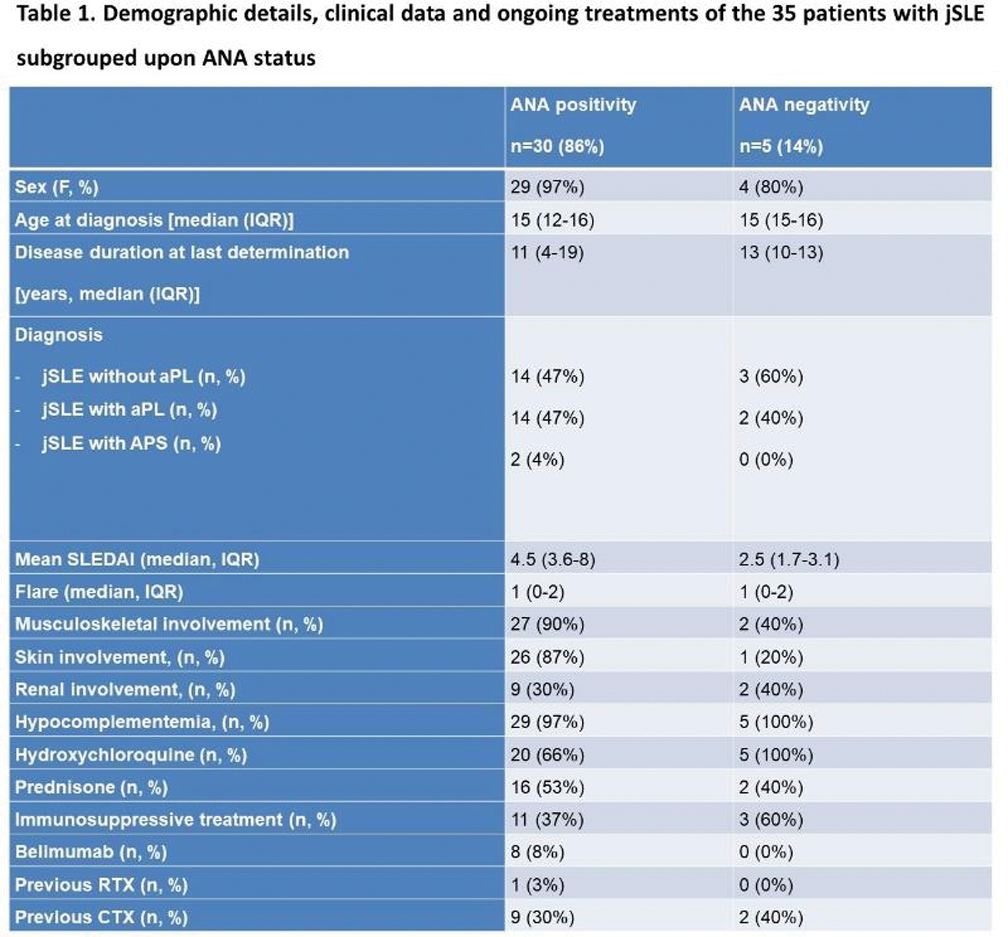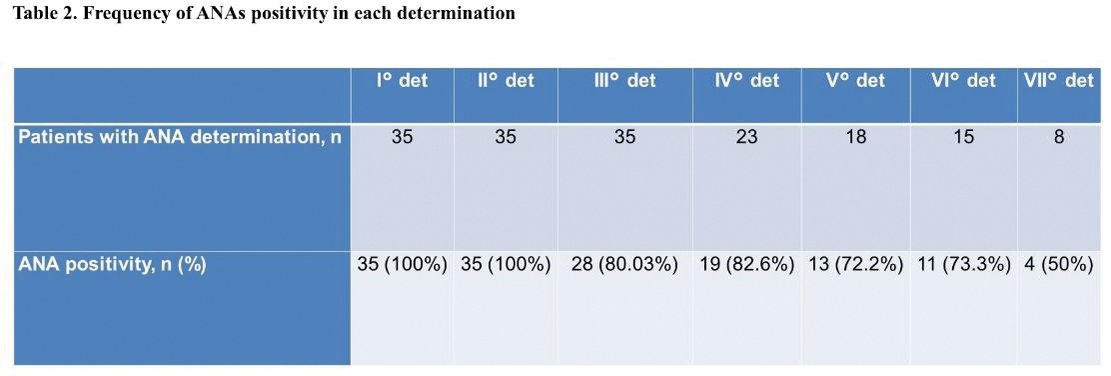

Background: The negativization of antinuclear antibodies (ANA), defined as two consecutive negative determinations, is described in about 13% of patients with systemic lupus erythematosus (SLE). A single study assessed ANA negativization in juvenile-onset SLE (jSLE), reporting negative ANA seroconversion in 2.63% of patients, without significant associations with any demographic or clinical variable.
Objectives: This study aims at determining the ANA negativization rate in a monocentric cohort of jSLE patients, evaluating all potential predictive factors of seroconversion and assessing the association between seroconversion and disease flare.
Methods: Patients with SLE diagnosis formulated according to 2019 ACR/EULAR criteria before the age of 18 years, regularly attending our institution, were recruited in case of at least 3 available longitudinal ANA determinations. ANA were assessed by indirect immunofluorescence on HEp-2 and a titer ≥1:80 was considered positive. Demographic details, clinical and serological features of the disease, ongoing therapies, and disease activity (assessed through SLEDAI and BILAG) were retrospectively collected at each ANA determination. A flare was defined as a new BILAG A or two BILAG B in any disease domain. Univariate logistic regression analyses were performed.
Results: 35 patients (94% female, median age at diagnosis of 15 years) fulfilling the inclusion criteria were recruited. In 8 subjects (22.9%), isolated negativity was found in a single determination, without confirmation in the subsequent tests. ANA were negative in at least 2 consecutive determinations in 5 patients (14.3%). This seroconversion occurred on average 5.8 years after diagnosis and 1.5 years after the last disease relapse. Among the 5 patients with negative seroconversion, only one subject displayed a disease flare during follow-up (20%). A higher mean SLEDAI score, musculoskeletal and mucocutaneous involvements were associated with a lower frequency of ANA negativization (p=0.01, odds 36; p=0.02, odds 0.02; p=0.00, odds 0.03, respectively). No association was found with ongoing and/or previous therapy and the number of disease flares.
Conclusion: The rate of ANA negative seroconversion in this cohort is higher than what reported for jSLE but consistent with literature data in SLE patients. Further studies with larger cohorts are needed to assess the association between ANA negativization and clinical features, as well as ongoing and/or previous therapies.
REFERENCES: [1] Bao S, Huang H, Jin Y, Ding F, Yang Z, Xu X, et al. Autoantibody-based subgroups and longitudinal seroconversion in juvenile-onset systemic lupus erythematosus. Lupus Sci Med 2023;10(1).


Acknowledgements: NIL.
Disclosure of Interests: None declared.